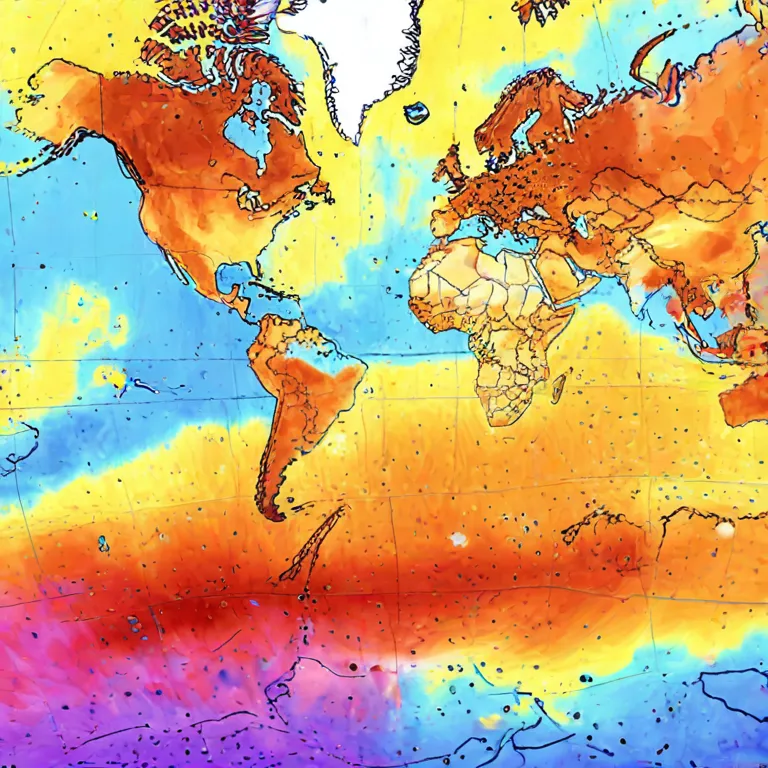
By Saeed Mirshekari
July 11, 2024


Access O'Mentors
Top Data Scientist Mentors from Fortune 500 Companies excited to help you out 1-on-1!
1️⃣ Explore freely
→
2️⃣ Apply confidently
→
3️⃣ Pay securely
→
4️⃣ Book instantly
The Statistics of Heatwaves and the Impact of Data Analysis on Prediction and Prevention
Heatwaves are extreme weather events characterized by prolonged periods of excessively high temperatures, often accompanied by high humidity. These events pose significant risks to human health, infrastructure, agriculture, and the environment. Understanding the statistics of heatwaves and leveraging data analysis for prediction and prevention are crucial for mitigating their impact and protecting vulnerable populations.
Understanding Heatwaves
Heatwaves are not merely hot weather; they are defined by their duration, intensity, and impact on human health and society. The factors contributing to heatwaves include atmospheric conditions, geographical features, and human activities.
Frequency of Heatwaves
Heatwaves are becoming more frequent and intense due to climate change. According to the Intergovernmental Panel on Climate Change (IPCC), the frequency, duration, and intensity of heatwaves have increased globally over the past century.
- Global Trend: The frequency of heatwaves has doubled since the 1960s, and they are expected to become more frequent and severe in the future.
- Regional Variability: Certain regions, such as urban areas and densely populated coastal areas, are more susceptible to heatwaves due to the urban heat island effect and proximity to heat-trapping bodies of water.
Causes of Heatwaves
Several factors contribute to the formation and intensification of heatwaves:
- High-pressure Systems: Heatwaves are often associated with stationary high-pressure systems that trap warm air near the surface, preventing the dissipation of heat.
- Climate Change: Rising global temperatures due to greenhouse gas emissions increase the likelihood of heatwaves and exacerbate their intensity and duration.
- Urbanization: Urban areas with high concentrations of buildings, pavement, and vehicles absorb and retain heat, amplifying the effects of heatwaves.
- Land Use Changes: Deforestation and land degradation reduce the land's ability to absorb and dissipate heat, contributing to higher temperatures.
Impacts of Heatwaves
Heatwaves have far-reaching impacts on various aspects of society, including human health, infrastructure, agriculture, and the environment. These impacts can be severe and long-lasting, particularly for vulnerable populations.
Human Health Impact
Heatwaves pose significant risks to human health, leading to heat-related illnesses and fatalities:
- Heat-related Illnesses: Heat exhaustion, heatstroke, and dehydration are common health issues during heatwaves, particularly among the elderly, children, and individuals with pre-existing health conditions.
- Mortality: Heatwaves are associated with an increase in mortality rates, with heat-related deaths occurring due to cardiovascular and respiratory problems.
Economic Impact
The economic consequences of heatwaves are substantial, affecting various sectors of the economy:
- Productivity Losses: High temperatures can reduce productivity in outdoor industries such as agriculture, construction, and manufacturing.
- Infrastructure Damage: Heatwaves can cause damage to infrastructure, including roads, railways, and buildings, due to thermal expansion and buckling.
Environmental Impact
Heatwaves can also have significant environmental consequences:
- Ecosystem Stress: High temperatures and drought conditions stress ecosystems, leading to reduced biodiversity, wildfires, and habitat loss.
- Water Scarcity: Heatwaves exacerbate water scarcity by increasing evaporation rates and reducing water availability for agriculture, industry, and human consumption.
Data Analysis in Heatwave Prediction and Prevention
Data analysis plays a crucial role in predicting heatwaves and implementing measures to mitigate their impacts. By analyzing historical weather data, monitoring real-time conditions, and developing predictive models, scientists can improve heatwave forecasting and develop targeted interventions to protect vulnerable populations.
Historical Data Analysis
Historical weather data provides valuable insights into past heatwave events, allowing scientists to identify trends and patterns:
- Trend Analysis: Statistical analysis of historical data helps identify long-term trends in heatwave frequency, duration, and intensity.
- Vulnerability Mapping: Geographic analysis identifies areas that are most vulnerable to heatwaves, considering factors such as population density, socio-economic status, and access to cooling resources.
Real-Time Monitoring
Real-time monitoring of weather conditions is essential for detecting the early signs of heatwaves and issuing timely warnings:
- Satellite Imagery: Satellites provide continuous monitoring of temperature patterns and heatwave formation, allowing for early detection and response.
- Weather Stations: Ground-based weather stations collect data on temperature, humidity, wind speed, and other variables, contributing to real-time analysis and forecasting.
Predictive Modeling
Predictive models use historical data and real-time observations to forecast the onset, duration, and intensity of heatwaves:
- Numerical Weather Prediction (NWP): NWP models simulate atmospheric processes to generate short-term and long-term forecasts of weather patterns, including heatwaves.
- Machine Learning Algorithms: Machine learning algorithms analyze large datasets to identify patterns and trends, improving the accuracy of heatwave predictions and warnings.
Early Warning Systems
Effective early warning systems are essential for minimizing the health impacts of heatwaves:
- Heat Health Warning Systems: These systems use data analysis and predictive models to issue heatwave warnings and provide guidance on protective measures, such as staying hydrated, seeking shade, and avoiding strenuous outdoor activities.
- Community Outreach: Public education campaigns raise awareness about heatwave risks and promote adaptive strategies to protect vulnerable populations, including the elderly, children, and individuals with chronic illnesses.
Case Study: The European Heatwave of 2003
The European heatwave of 2003 serves as a sobering example of the devastating impact of extreme heat events:
- Mortality: The heatwave was responsible for an estimated 70,000 excess deaths across Europe, with France, Italy, and Spain among the hardest-hit countries.
- Health Impact: Heat-related illnesses, including heatstroke and dehydration, overwhelmed healthcare systems, leading to a surge in hospital admissions and emergency room visits.
- Lessons Learned: The 2003 heatwave prompted European governments to improve heatwave preparedness and response measures, including the implementation of early warning systems, public health campaigns, and the development of heatwave action plans.
Challenges and Future Directions
While data analysis has significantly improved heatwave prediction and prevention, several challenges remain:
- Data Quality: Ensuring the accuracy and reliability of weather data, particularly in developing countries with limited monitoring infrastructure, is essential for effective analysis and forecasting.
- Adaptation Strategies: Developing and implementing adaptation strategies, such as urban greening, building design improvements, and heat-resilient infrastructure, will be crucial for minimizing the impacts of heatwaves in the future.
- Climate Change Mitigation: Addressing the root causes of climate change through mitigation measures, including reducing greenhouse gas emissions and transitioning to renewable energy sources, is essential for preventing the escalation of heatwave events.
Conclusion
Heatwaves are extreme weather events with significant impacts on human health, infrastructure, agriculture, and the environment. Through the power of data analysis, scientists can better predict and understand heatwaves, enabling more effective prevention and mitigation strategies. From historical data analysis to real-time monitoring and advanced predictive modeling, data-driven approaches are essential for enhancing our resilience to heatwaves. As technology and our understanding of climatic processes continue to evolve, so too will our ability to predict, prepare for, and mitigate the impacts of these extreme heat events.

Saeed Mirshekari
Saeed is currently a Director of Data Science in Mastercard and the Founder / Director of OFallon Labs LLC. He is a former research scholar at LIGO team (Physics Nobel Prize of 2017).